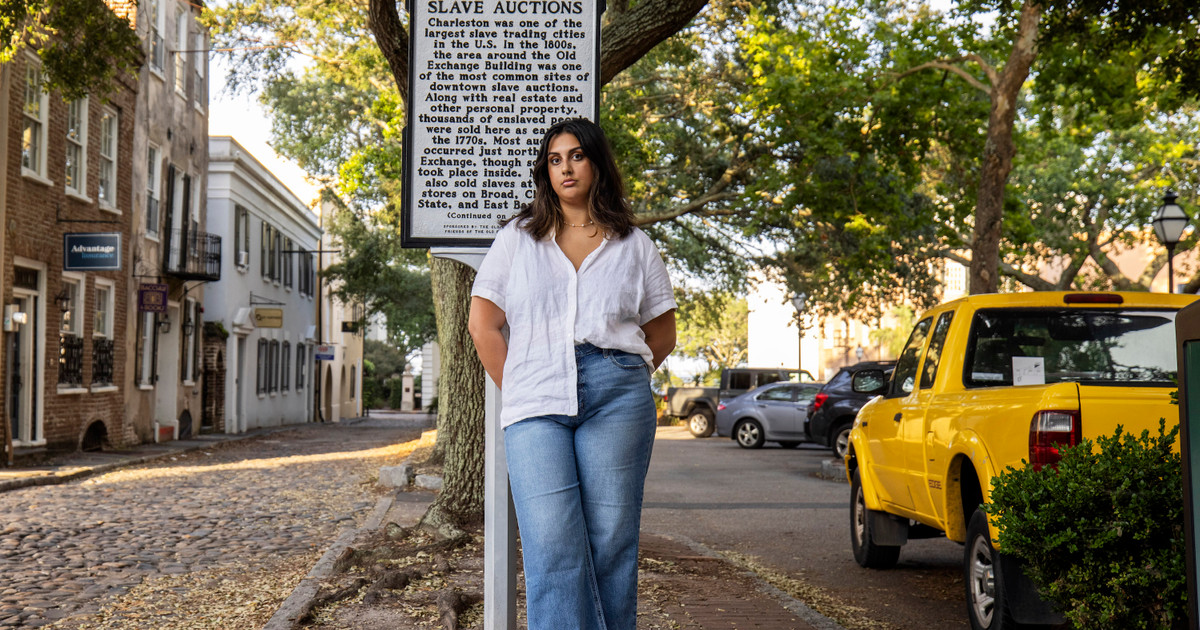Uncovering the Largest Known Slave Auction in the U.S.
Core Concepts
The author reveals the largest known slave auction in the U.S., shedding light on the significant harm caused by such transactions.
Abstract
Lauren Davila, a graduate student, discovered a shocking ad for a slave auction of 600 people in Charleston. The sale was part of John Ball Jr.'s estate auction, revealing details about the Ball family's involvement in slavery and the horrors faced by enslaved individuals. The story highlights how this auction contributed to generational wealth gaps and racial disparities that persist today.
How a Grad Student Uncovered the Largest Known Slave Auction in the U.S.
Stats
"This day, the 24th instant, and the day following, at the North Side of the Custom-House, at 11 o’clock, will be sold, a very valuable GANG OF NEGROES, accustomed to the culture of rice; consisting of SIX HUNDRED."
"A sale of 600 people would mark a grim new record — by far."
"The ad Davila found was brief. It yielded almost no details beyond the size of the sale and where it was being held — nothing about who sent the 600 people to auction."
Quotes
"It is a kind of summit in its cruelty." - Edward Ball
"They are remembered as these great Christian men of high value." - Lauren Davila
Key Insights Distilled From
by Jennifer Ber... at www.propublica.org 02-21-2024
https://www.propublica.org/article/how-grad-student-discovered-largest-us-slave-auction
Deeper Inquiries
What long-term impacts did this slave auction have on both enslaved individuals and their descendants?
The slave auction of 600 people had profound and lasting impacts on both the enslaved individuals and their descendants. For the enslaved individuals, being sold at such auctions meant immediate separation from family members, forced labor under brutal conditions, physical abuse, and psychological trauma. The disruption of family units led to generational trauma that reverberated through time. The loss of cultural heritage, identity, and autonomy further exacerbated the suffering endured by those who were bought and sold as property.
For the descendants of those who were part of this auction, the legacy is one marked by systemic disadvantages rooted in historical injustices. The wealth accumulated by slave owners through such transactions was often passed down through generations while Black families were denied access to economic opportunities or resources due to institutionalized racism. This perpetuated a cycle of poverty, limited educational attainment, lack of access to healthcare services, and overall social marginalization for many Black Americans whose ancestors were subjected to slavery.
How did societal perceptions contribute to upholding individuals involved in such auctions despite their atrocities?
Societal perceptions played a significant role in upholding individuals involved in slave auctions despite the atrocities they committed. In antebellum America, there existed a pervasive ideology that dehumanized Black people and justified their enslavement based on racial superiority beliefs. White supremacy ideologies permeated all levels of society, including legal systems, religious institutions, educational frameworks, and cultural norms.
As a result, those engaged in the buying and selling of human beings at auctions were often viewed as respectable members of society rather than perpetrators of heinous crimes against humanity. Their actions were normalized within a system that condoned slavery as an acceptable practice for economic gain. Additionally, narratives romanticizing plantation life or portraying slave owners as benevolent overlords helped sanitize the brutal realities faced by enslaved individuals.
Furthermore, societal structures reinforced power dynamics that privileged white landowners while subjugating Black slaves. Laws upheld slavery as a legal institution while social hierarchies maintained racial segregation and discrimination. These factors combined created an environment where accountability for moral transgressions related to slavery was lacking or non-existent.
How can modern society address and rectify historical injustices like those revealed through this discovery?
Addressing historical injustices like those uncovered through this discovery requires a multi-faceted approach encompassing acknowledgment, reparations efforts,
educational initiatives,
and policy changes.
Firstly,
acknowledgment
of past wrongs is crucial for fostering collective healing
and understanding.
Public recognition
of events like large-scale slave auctions helps confront uncomfortable truths about our history
and challenges distorted narratives glorifying oppressive systems.
Reparations efforts should be considered
to provide restitution for descendants
of enslaved individuals who suffered intergenerational harm due to slavery.
This could take various forms,
such as financial compensation,
investment in communities disproportionately affected by historical injustices,
or support for educational programs aimed at addressing systemic inequalities.
Educational initiatives play a vital role
in promoting awareness about past atrocities like large-scale slave auctions.
Including accurate depictions
of these events in school curricula helps counteract whitewashed versions
of history that minimize
the impact
of slavery on American society.
Policy changes are necessary
to dismantle systemic inequities rooted
in centuries-old practices like chattel slavery.
Reforming criminal justice systems,
addressing disparities
in healthcare access,
and implementing anti-discrimination laws are essential steps towards creating a more just
and equitable society
By taking proactive measures informed by an understanding
of historical injustices like massive slave auctions,
modern society can move closer towards reconciliation
and ensure that past atrocities are not repeated
or overlooked
0
